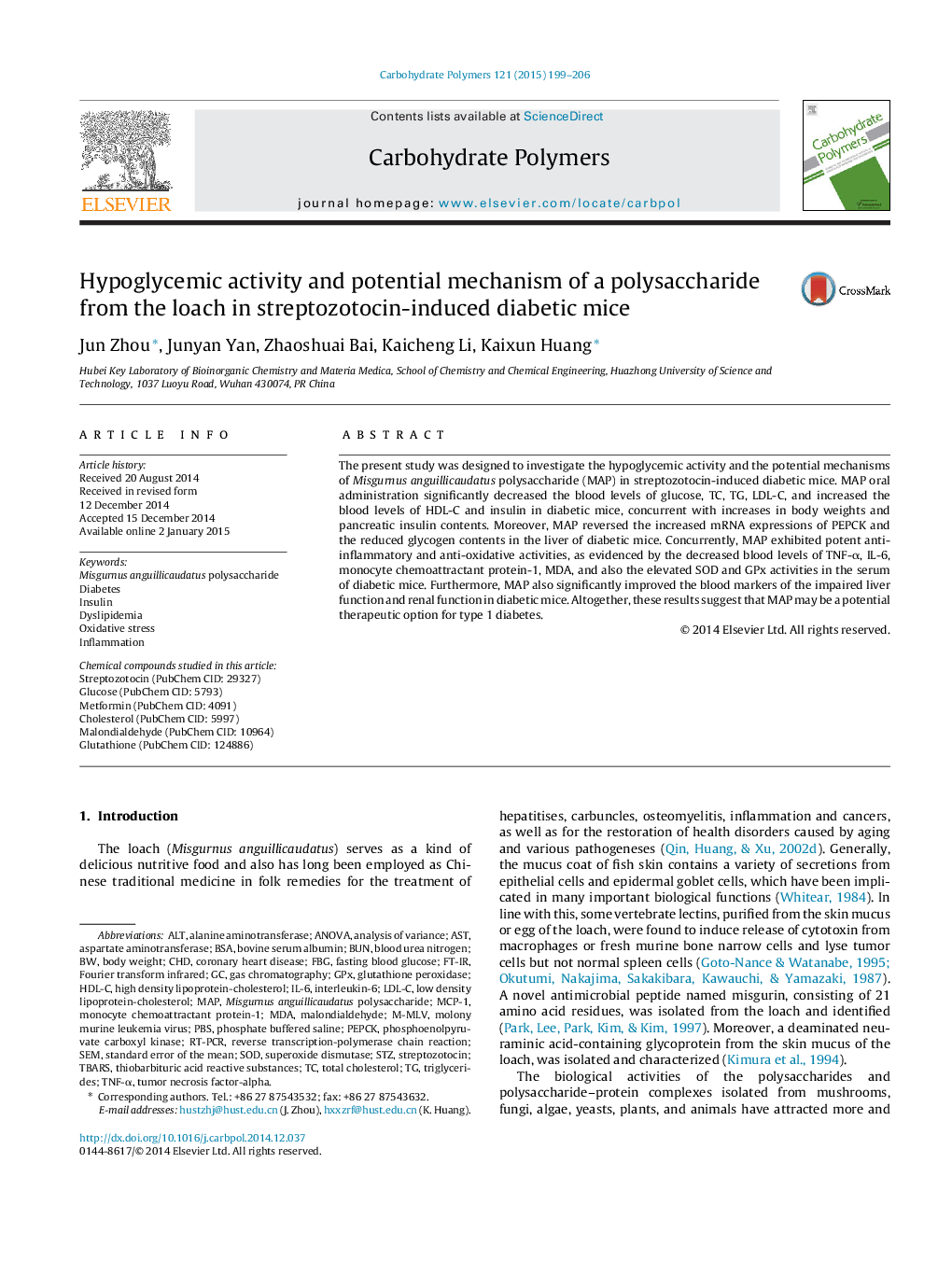| Article ID | Journal | Published Year | Pages | File Type |
|---|---|---|---|---|
| 1383255 | Carbohydrate Polymers | 2015 | 8 Pages |
Abstract
The present study was designed to investigate the hypoglycemic activity and the potential mechanisms of Misgurnus anguillicaudatus polysaccharide (MAP) in streptozotocin-induced diabetic mice. MAP oral administration significantly decreased the blood levels of glucose, TC, TG, LDL-C, and increased the blood levels of HDL-C and insulin in diabetic mice, concurrent with increases in body weights and pancreatic insulin contents. Moreover, MAP reversed the increased mRNA expressions of PEPCK and the reduced glycogen contents in the liver of diabetic mice. Concurrently, MAP exhibited potent anti-inflammatory and anti-oxidative activities, as evidenced by the decreased blood levels of TNF-α, IL-6, monocyte chemoattractant protein-1, MDA, and also the elevated SOD and GPx activities in the serum of diabetic mice. Furthermore, MAP also significantly improved the blood markers of the impaired liver function and renal function in diabetic mice. Altogether, these results suggest that MAP may be a potential therapeutic option for type 1 diabetes.
Keywords
LDL-CIL-6FBGGPXCHDHDL-CALTBSAASTAspartate aminotransferaseAlanine aminotransferasebovine serum albumininterleukin-6coronary heart diseaseFourier transform infraredanalysis of varianceANOVABUNFT-IRfasting blood glucoseLow density lipoprotein-cholesterolHigh density lipoprotein-cholesterolmapblood urea nitrogenbody weightGas chromatographyglutathione peroxidase
Related Topics
Physical Sciences and Engineering
Chemistry
Organic Chemistry
Authors
Jun Zhou, Junyan Yan, Zhaoshuai Bai, Kaicheng Li, Kaixun Huang,
